Fast forward to an en route stop in Nottingham, for lunch and the castle.
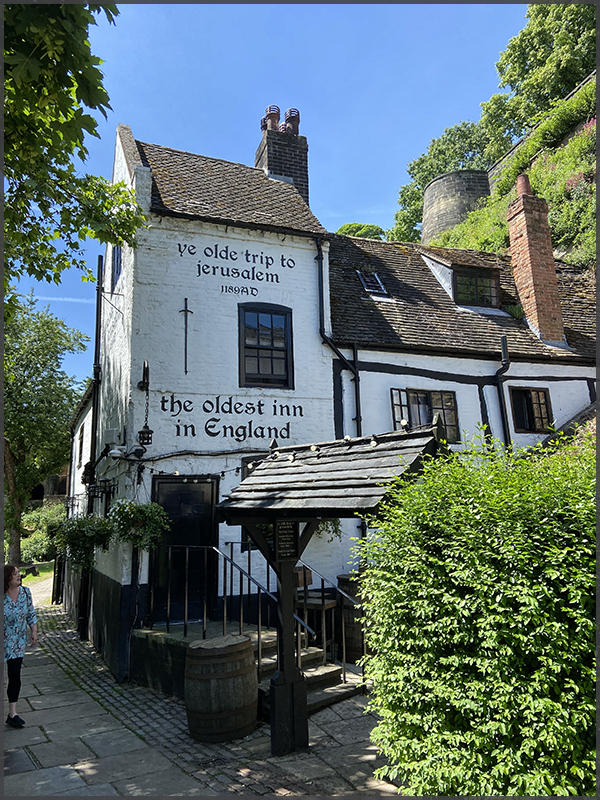

'Ye Olde Trip to Jerusalem', built in 1189, is known
as
England's oldest surviving inn.
The staff at the bar weren't the brightest.

More about the lace industry further down this report.
NOTTINGHAM CASTLE (MUSEUM)
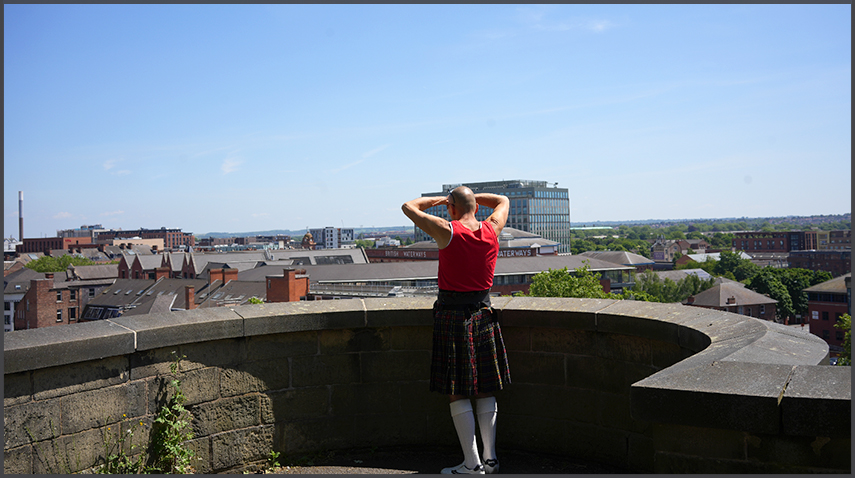

Nottingham is of course well known for the Robin Hood legend!
While King Richard I ('The Lionheart') was away on the Third Crusade, along with a great number of English noblemen, Nottingham Castle was occupied by supporters of Prince John, including the Sheriff of Nottingham.
In the legends of Robin Hood, Nottingham Castle is the scene of the final showdown between the sheriff and the heroic outlaw.[¬ Wikipedia] |

Recorded Friar Tuck for my #OnReading series.

It was warm, the sun burning down,
inactivity seemed attractive but we did not have the time.

The gatehouse to the castle on the hill
Nottingham Castle is a Stuart Restoration-era ducal mansion in Nottingham, England, built on the site of a Norman castle built starting in 1068, and added to extensively through the medieval period, when it was an important royal fortress and occasional royal residence.
In decline by the 16th century, the original castle, except for its walls and gates, was demolished after the English Civil War in 1651.
The site occupies a commanding position on a natural promontory known as 'Castle Rock' which dominates the city skyline, with cliffs 130 feet (40 m) high to the south and west. |

The castle was converted to a palace and later converted to a gallery / museum

A clear illustration on how the castle overlooked the countryside, aptly named 'castle rock'
 Nottingham's medieval castle was converted to Ducal Palace in 1679, the museum openened in 1878
Nottingham's medieval castle was converted to Ducal Palace in 1679, the museum openened in 1878
After the restoration of Charles II in 1660, the present 'Ducal Mansion' was built for the 1st Duke of Newcastle and completed by his son, the 2nd Duke of Newcastle, after the 1st Duke's death.
This "Italianate" palace was seen as one of the finest in England at the time.
Despite the destruction of the keep and fortifications of the upper bailey, some rock cut cellars and medieval pointed arches survive beneath the mansion, together with a long passage to the bottom of the rock, commonly known as Mortimer's Hole, through which guided tours take place, starting at the castle and ending at Brewhouse Yard.
[¬ Wikipedia] |

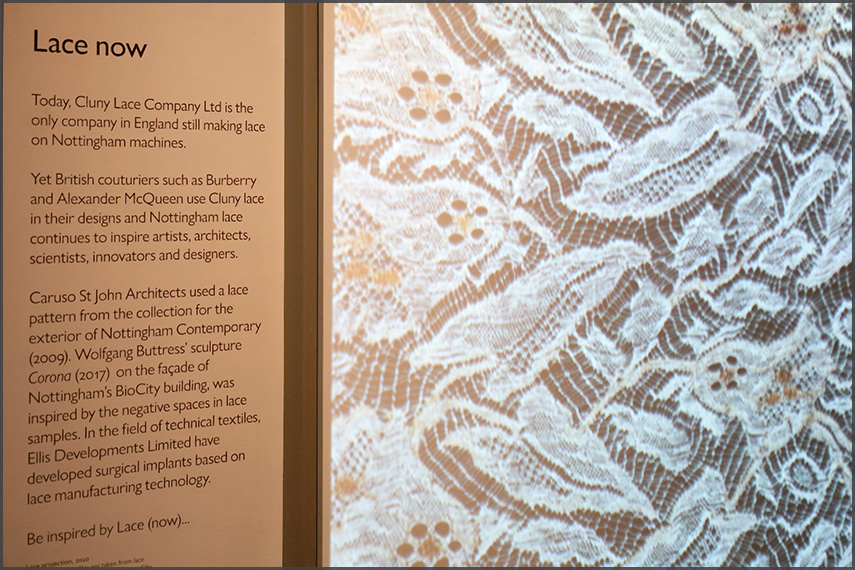
'Today, Cluny Lace Company is the only company in England still making lace on Nottingham machines.'

The castle is presently owned by Nottingham City Council.
After a £30 million restoration from 2018, running of the site was undertaken by independent charitable Nottingham Castle Trust with reopening on 21 June 2022.
The castle closed again on 21 November 2022 when the trust went into liquidation owing the council £2.68 million, with all employees made redundant by the joint-administrators...
The castle and grounds reopened to visitors on 26 June 2023.
Our visit was on 02Jun24, a timely visit then!
|



Salt-glazing. 'The kilns, techniques and processes became a closely guarded secret, as the pots sold across the UK,
Europe and North America. Nottingham Ware was popular well into the 19th century.'

'Each bear pot was unique, thwon in two halves, with arms, legs, chain links and other features moddelled by hand.
The fur was formed by grinding once-fired clay in to chips.'


The museum's art gallery, the centrepiece of the former Midland Counties Art Museum.


'Market Place, Nottingham, c.1920 - by Nottingham artist Arthur Spooner.'
'On this bright and busy market day people
are browsing and chatting. Part of the market square is in the shadow,
which maks the colours of the fruit and vegetable stalls caught by the sunlight appear even more vibrant in contrast.'

One for my #LOOK series.

THE LUDDITES. By 1811 the textile workers of Nottinghamshire faced starvation. Wages were collapsing, while
food prices soared. Many believed their woes were caused by the market being flooded with cheap, poor quality
textiles, produced by unskilled workers.
Forbidden from forming unions or going on strike, and their petitions to Parliament ignored, some resorted to desperate measures. Styling themselves as followers of Ned Ludd, a mythical Robin Hood-like figure, they secretly launched attacks on their employers' machines. |
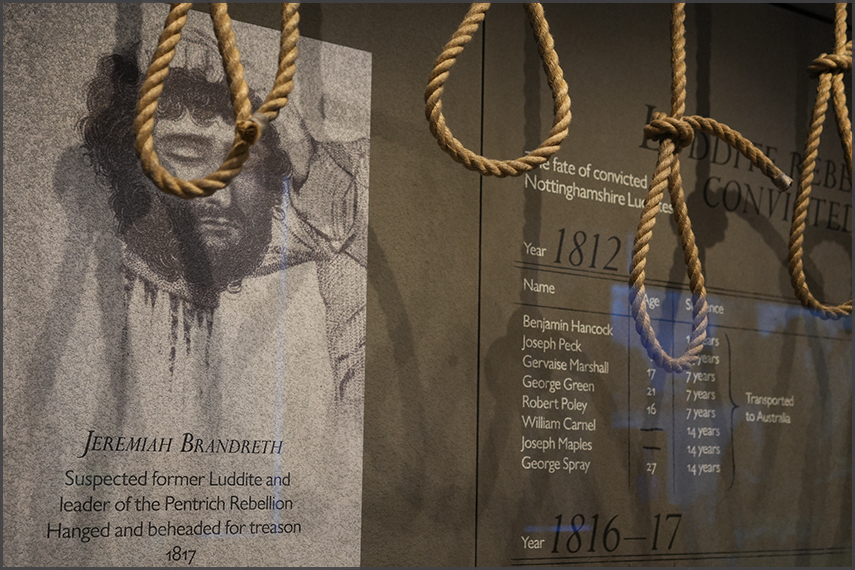

Parliamentarian forces battling against the Royalists.
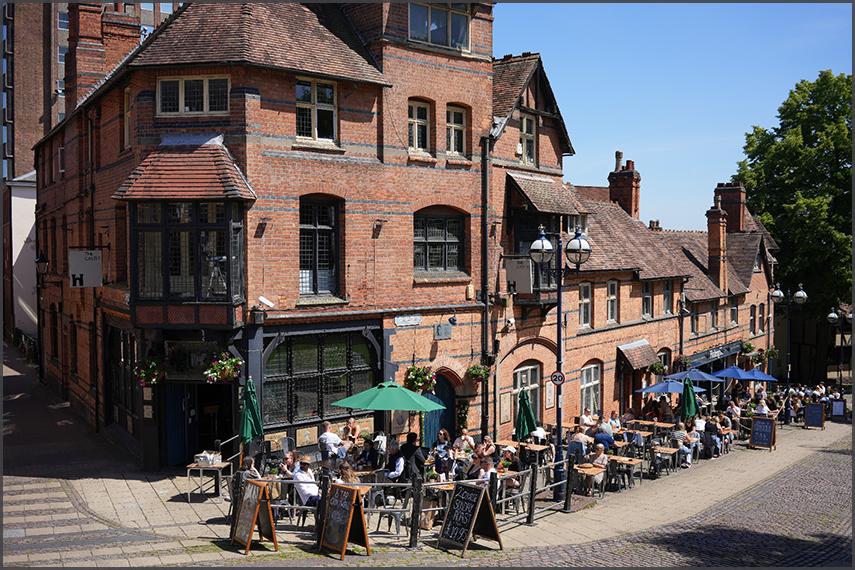 This This historic centre seemed nice but we had to make tracks, heading up further north, to York.
This This historic centre seemed nice but we had to make tracks, heading up further north, to York.
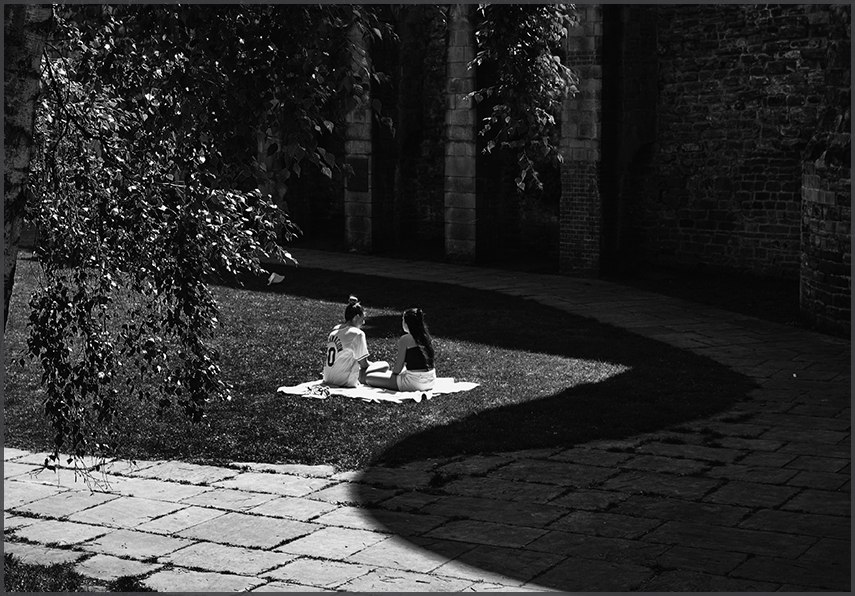
 Photos © Ruud Leeuw
Photos © Ruud Leeuw

